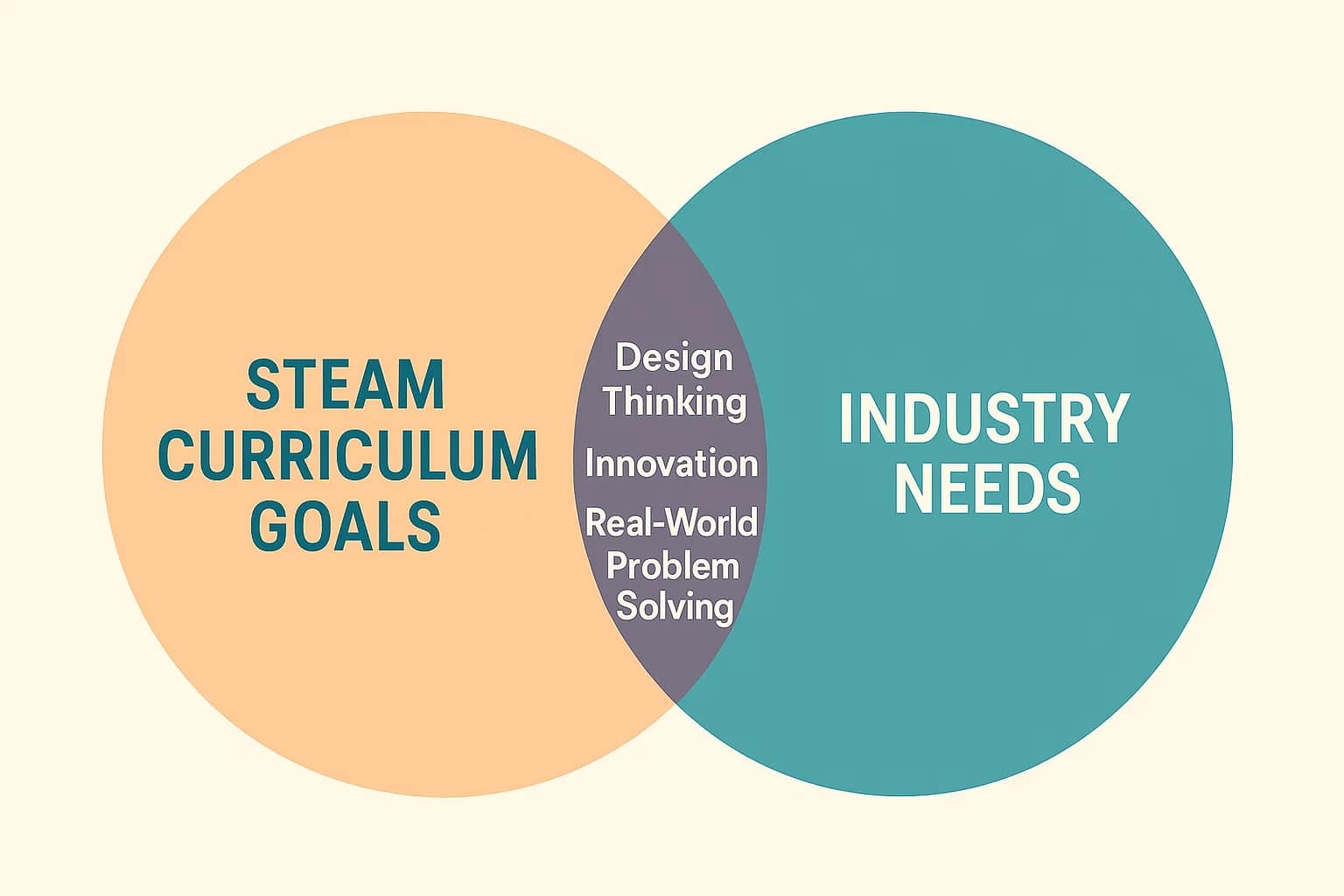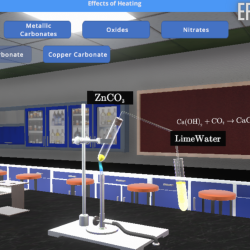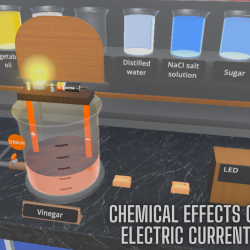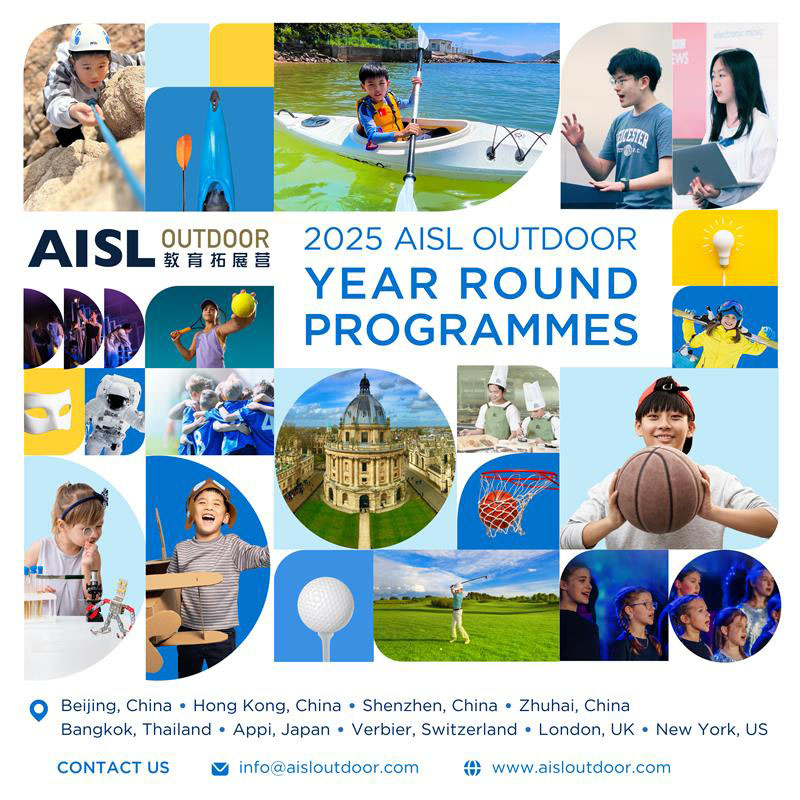As STEAM education gains momentum globally, many schools are asking: how can we give our students more meaningful exposure to the real-world challenges they’re learning about in class? While classroom simulations and maker spaces are valuable, authentic connections with industry often remain underdeveloped. Structured internships and partnerships with organisations in science, technology, engineering, the arts, and mathematics can close this gap, linking theory with practice in a way that enhances student engagement and deepens learning.
But schools must consider the right frameworks, leadership responsibilities, and collaborative structures to ensure these partnerships are more than surface-level. Whether it’s a short-term design challenge co-created with a local business, or a year-long paid internship in a tech lab, strong planning is key. This article explores our practical strategies for designing industry partnerships and internships that work, for students, teachers, and external collaborators alike.
Identifying the Right Industry Partners
Building meaningful partnerships begins with understanding what your school and students need, and what potential partners value. The goal is to create a reciprocal relationship that benefits both parties; industry partners and students.

Aligning with Your STEAM Curriculum
Before reaching out, clarify the core skills and competencies your students are working to develop. Are you aiming to strengthen coding fluency, problem-solving through design, or data interpretation? Identifying clear learning goals will help determine the type of partner that best fits your programme.
For example, if your students are focused on environmental engineering projects, partnering with a renewable energy firm or urban planning department would provide targeted expertise.
What Industry Partners Are Looking For
Companies don’t always need their student partners to arrive with deep technical expertise. Instead, they value enthusiasm, curiosity, and the opportunity to engage with fresh perspectives. Many organisations are also motivated by a genuine commitment to community development and talent pipeline building.

Start by considering local businesses, design studios, NGOs, or startups that already show interest in education, innovation, or sustainability. Hosting a small networking event, or inviting potential partners to a STEAM showcase evening, can open the door to productive discussions about shared goals.
Designing Internships That Work for Schools and Students
Effective internships don’t have to mimic adult workplaces. For students in STEAM fields, the best placements create environments where creativity, experimentation, and inquiry are encouraged, while still offering real-world exposure and structure.
Tailoring Internships for Student Readiness
Internship design should reflect the age and ability of the students involved. For younger secondary students, short-term project immersions or shadowing opportunities may be more appropriate than full-day work experiences. These could include:
- Week-long “design sprints” hosted by local firms
- Virtual mentoring sessions with professionals in engineering or UX design
Half-day site visits that link directly to classroom learning

For senior students, consider capstone-style internships that align with their subject pathways. For instance, a student focusing on computer science might assist in testing an app prototype for a local tech startup, contributing directly to usability feedback.
Embedding Reflection and Learning Outcomes
Internships are most impactful when students are guided to reflect on their experiences. To support this:
- Build in reflection journals or creative project presentations post-placement
- Align experiences with assessment rubrics or skill-based checklists
- Facilitate debriefing discussions with peers and mentors
Building Sustainable Industry Relationships
A strong internship programme relies on genuine partnerships with industry, not one-off events. To develop and sustain these collaborations, schools need to be proactive, flexible, and aligned with real-world needs.
Approaching Partnerships Strategically
Rather than simply asking companies for placements, schools should position partnerships as mutually beneficial. This involves:
- Highlighting how student involvement can support a company’s outreach, innovation, or mentoring goals
- Matching school project timelines with industry calendars to minimise disruption
Offering flexibility in how businesses engage, through guest lectures, project briefs, or hosted challenges
Ensuring Communication and Clear Expectations
To keep partnerships on track:
- Use written agreements to clarify roles, goals, and student supervision needs
- Assign a dedicated liaison (e.g. a STEAM coordinator) to manage relationships and check in regularly
- Gather feedback from both students and industry mentors post-project
Aligning Internships with Curriculum Goals
Well-structured STEAM internships should enhance and deepen the curriculum. By designing opportunities that reinforce classroom learning while building transferable skills, schools can ensure both educational rigour and student engagement.
Linking Industry Experience to Learning Objectives
To make internships more than just “work experience”, schools should:
- Map projects to specific curriculum strands, such as coding in computer science, design thinking in technology, or data analysis in science
- Use reflection journals, presentations, or assessments to help students connect their learning to the classroom
- Introduce pre- and post-internship sessions to frame the experience with clear goals and outcomes
For example, a Year 12 student exploring biotech innovation in a local lab could reflect on ethical issues discussed in biology, or apply design cycle stages from their design technology course to improve lab processes.
Promoting Equity in Access and Participation
To ensure all students benefit, schools need to address barriers such as transport, confidence, or language skills. Strategies may include:
- Offering virtual or hybrid internship models where in-person roles aren’t feasible
- Providing scaffolded support for underrepresented students (e.g. mentorship, prep workshops)
- Curating a variety of placements across fields and formats to suit different interests and abilities
Preparing Students for the Future Through Real-World STEAM Experiences
Building structured internships and industry partnerships into STEAM education is a vital step towards future readiness. By designing programmes that are purposefully aligned with curriculum goals and reflective of industry expectations, schools can empower students to see themselves as capable contributors to real-world innovation.
Whether through short-term placements, live briefs with local businesses, or long-term mentorships, these initiatives help students apply their learning, build confidence, and develop the kinds of skills, collaboration, critical thinking, adaptability, that can’t be taught by textbooks alone. For schools looking to make their STEAM programme truly future-focused, forming strategic partnerships with industry is one of the most impactful moves they can make.
Explore more ways to strengthen your school’s STEAM learning approach at AISL Mall.
Virtual science lab tools and hybrid learning solutions that may interest you:
Get a special discount by quoting code AISLMALL during CHECKOUT.
3D Interactive STEM Virtual Lab – High School

Scholarlab is an advanced virtual lab offering 3D interactive science experiments and real-life simulations for grades 9-12. It provides a hands-on, safe, and application-oriented learning experience, allowing students to reset, repeat, and rerun experiments. A top STEM tool for enhancing science education. Scholarlab simplifies complex concepts in science using powerful and immersive visualization techniques.
3D Interactive STEM Virtual Lab – Middle School

Scholarlab is an advanced virtual lab offering 3D interactive science experiments and real-life simulations. It provides a hands-on, application-oriented STEM learning experience for grades 6-8, featuring safe, repeatable experiments that enhance understanding and skills in science.










